Caiazzo (Campania)
with nice coloured initial
Detail
Date of first map: 1596
Date of this map: 1598
Dimensions (without margins): 37,3 x 49,5 cm
Dimensions (including margins): 40 x 54,5 cm
Condition: Good copper engraving. Sharp printing. Centre fold as published. Decent margins. Small damage near to upper centerfold. Old colouring with coloured initial at the back.
Condition rating: A
Verso: text in French
Map reference: Van der Krogt 4, 733; Taschen, Br. Hog. p.430
From: Civitates Orbis Terrarum: Urbium Praecipuarum Mundi Theatrum Quintum Auctore Georgio Braunio Agrippinate. Part 5. Köln, 1596/97. (Van der Krogt 4, 41:1.5)
In stock
Caiazzo commented by Braun
“Caiazzo is an old town in the fertile countryside of Campania beside the River Volturno. It formerly had Roman civic right, as can be read in the inscription on an ancient stone in the markerplace even today. A large part of the Old Town wall still survives and makes no mean contribution to the beauty of the town. There are further antiquities and old inscriptions to be seen in the town, which cannot all be described on this one page […]. The church of Caiazzo maintains the old tradition of icons, little known in Germany and France. “
TRANSLATION OF CAPTION TOP: Caiazzo speaks to the reader: I am mighty through piety and the equal of Rome in age; Tullius (Cicero) and our ruins bear witness to this. 1597.
CARTOUCHE LEFT: Calatia, in Italian Caiazzo, very ancient town in fertile Campania.
Taschen on Caiazzo
The well-fortified town of Caiazzo (also called the Città dell’Olio, “City of Oil”), which lies northeast of Capua in the immediate vicinity of the Vilturno, is seen in a bird’s-eye view from the southwest. Caiazzo became a bishopric as early as AD 966 and the episcopal complex with its house, gardens and church occupies a large part of the town centre. The fortifications were built in the 13th century. The fortress itself (Arx Civitatis) is strategically sited on a hill overlooking the town and was built on top of an earlier Lombard castle that itself stood on the ruins of a Roman fort. Lying within the hilly, picturesque countryside around Caiazzo are a Franciscan monastery towards the west, a Capuchin monastery (bottom left) and – near the Porta Vetus – a hospital (Hospicium publicum) and a potters’ workshop (officina figulorum)
Related items
-

Naples – Haec est Nobilis, & Florens Illa Neapolis
by Georg Braun and Frans HogenbergPrice (without VAT, possibly to be added): €900,00 / $999,00 / £801,00With a key to 71 locations
-

Fondi (Lazio)
by Georg Braun and Frans HogenbergPrice (without VAT, possibly to be added): €750,00 / $832,50 / £667,50
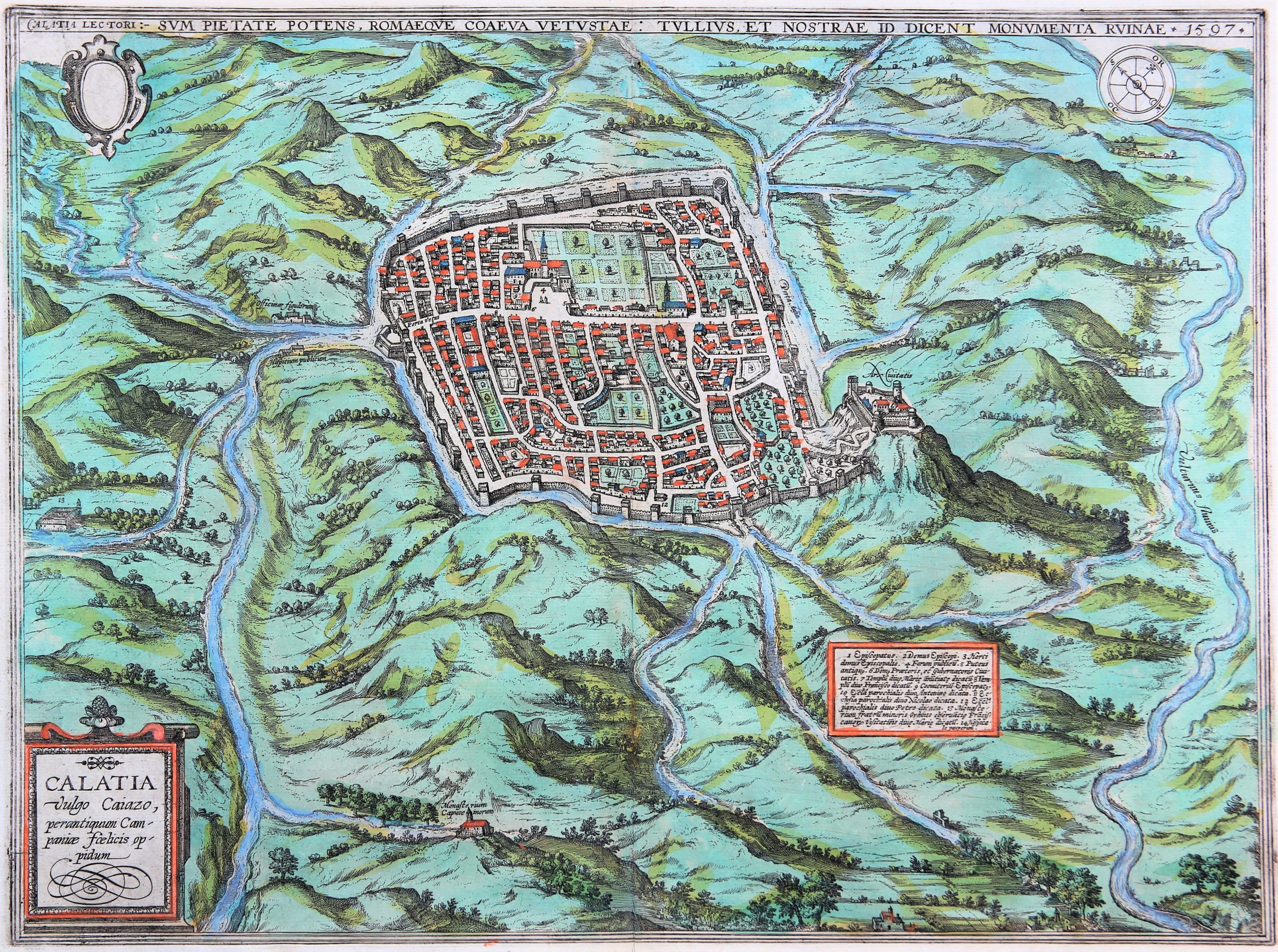
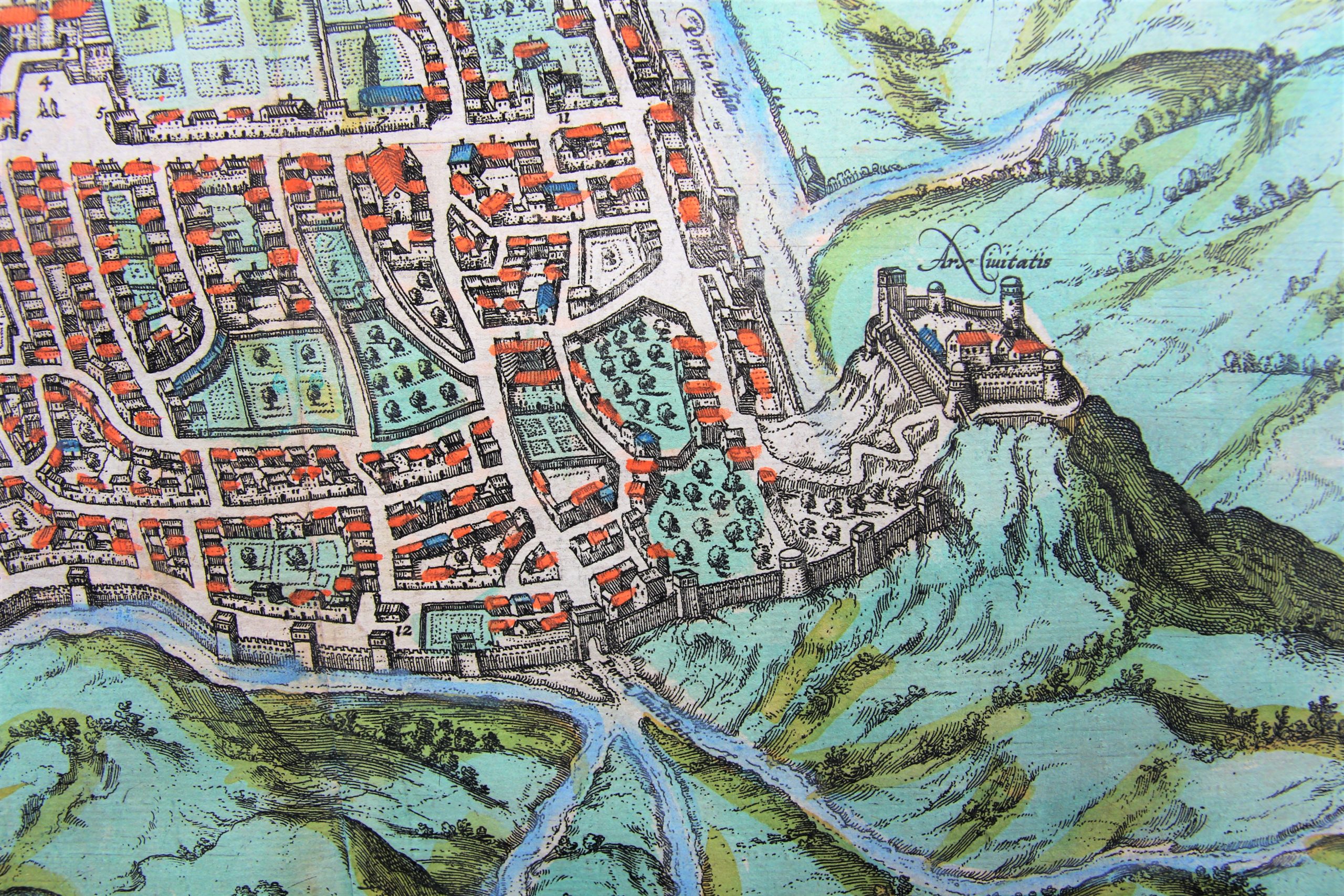
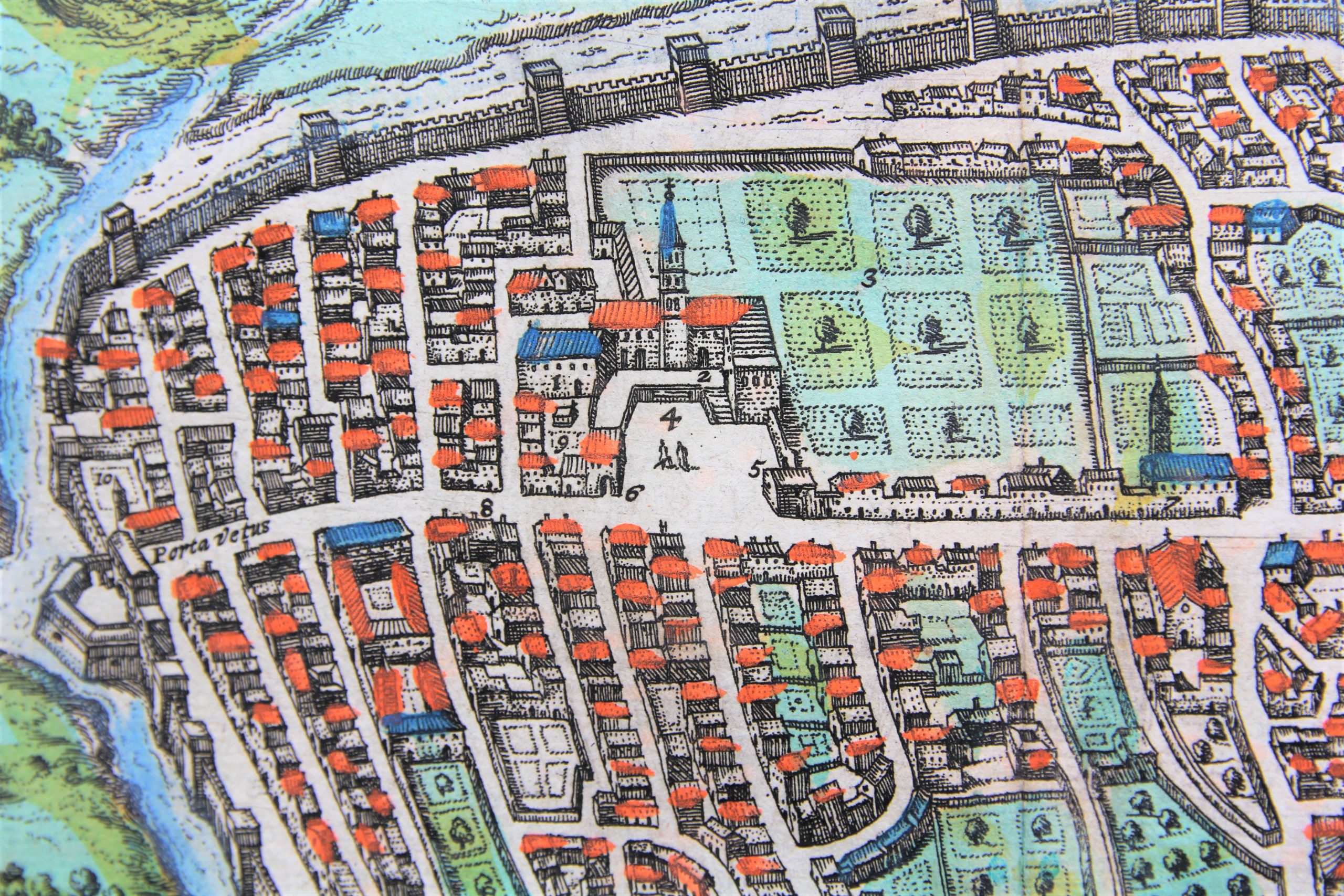
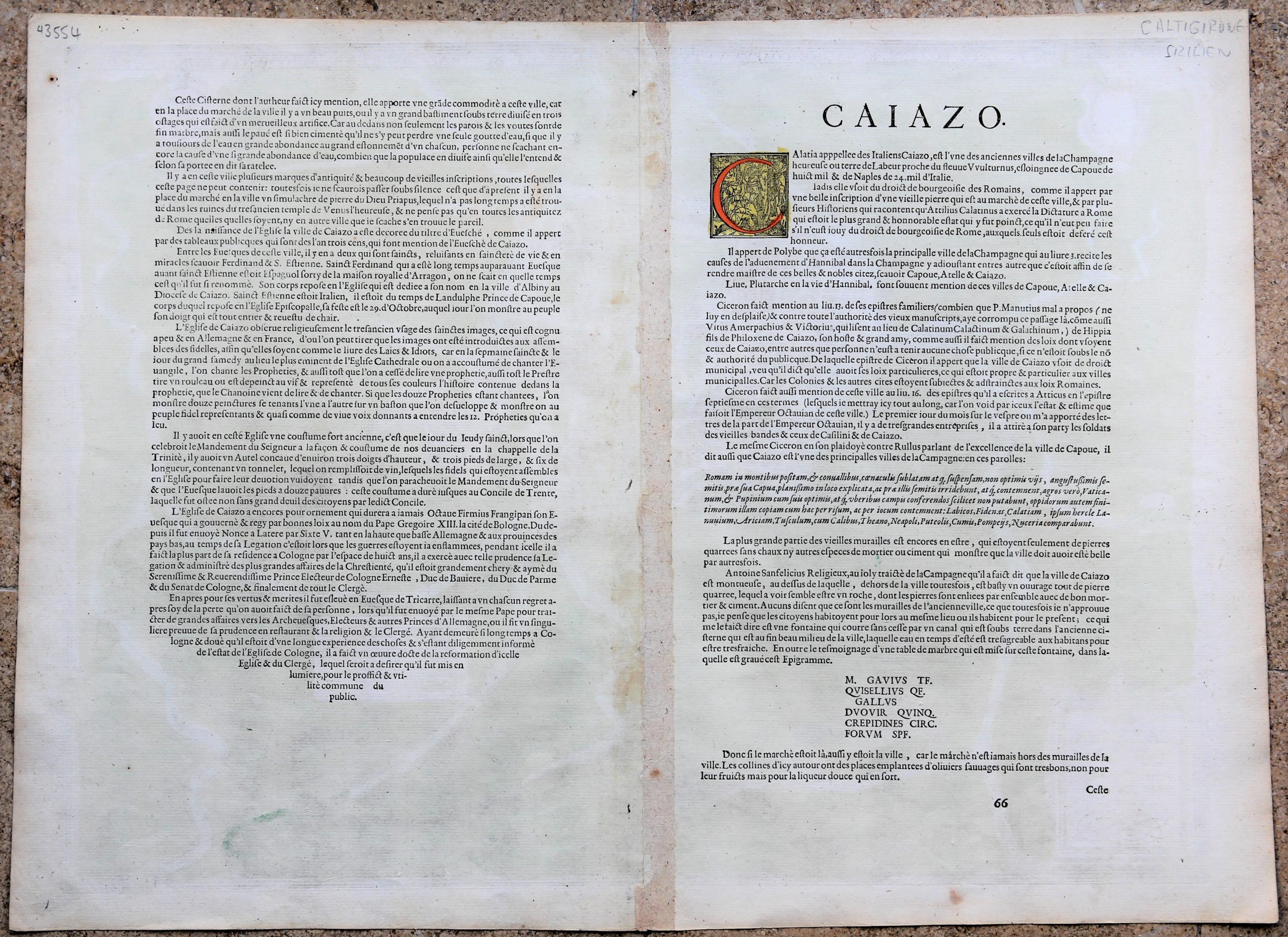
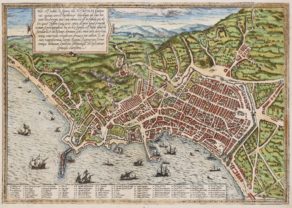
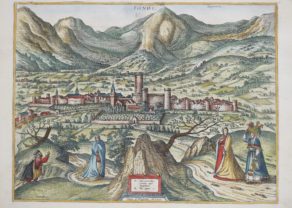
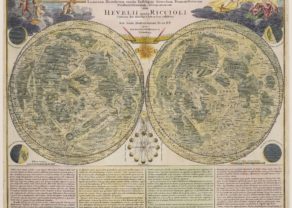
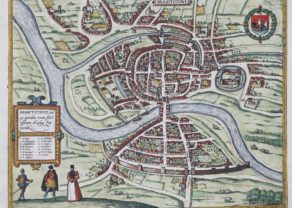
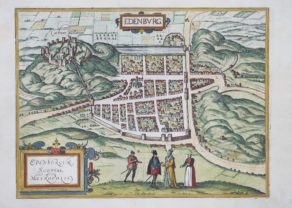
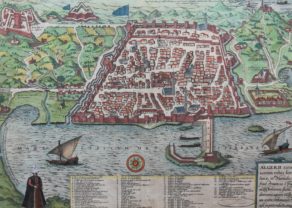
Caiazzo
The ancient Caiatia was already in the hands of the Romans in 306 BC as it issued copper coins with a Latin legend. It had the civitas sine suffragio (citizenship without the vote) which as a level of citizenship in the Roman Republic which granted all the rights of Roman citizenship except the right to vote in popular assemblies.
In the late Middel-Ages Caiazzo was the fief of numerous baronial families of the KIngdom of Naples. In the 19th century Caiazzo was one of the few towns in the kingdom whose population sided against Garibaldi’s expedition which annexed southern Italy to PIemonte.
The Civitates Orbis Terrarum
Being the greatest publication in its genre, the Civitates Orbis Terrarum, was compiled and written by George Braun, Canon of Cologne Cathedral. Braun gathered together vast amounts of information and draft plans to produce over 500 city views/maps published in six parts between 1572 and 1617.
Most of these engravings were made by Simon Novellanus and Frans Hogenberg, many after drawings by Joris Hoefnagel.